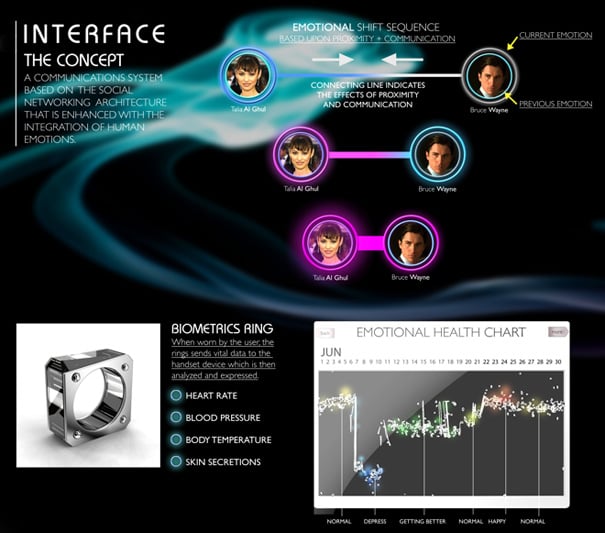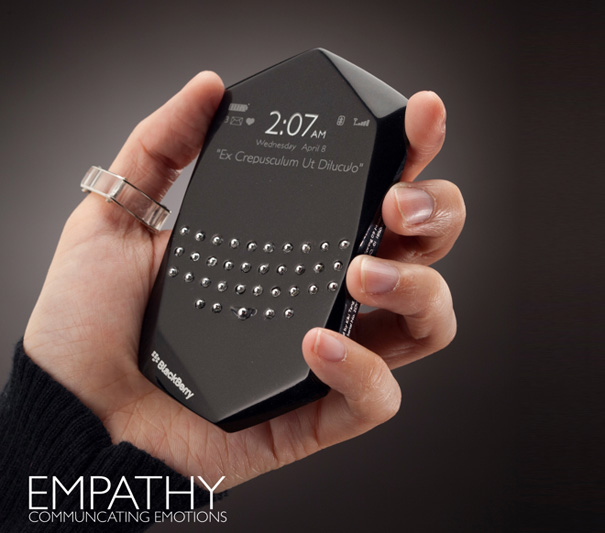When it comes to BlackBerrys, you have
the really tiny one, the
one with GPS, and now you can add to that list the one that just rocks. And we're not just talking about the Curve's music player or fully integrated stereo Bluetooth. RIM's latest fun-loving
smart phone (available for AT&T later this spring) boasts a sharp two-megapixel camera and a much-improved multimedia software package for taking your favorite songs, pictures, and videos to go--all without sacrificing the long battery life that's made BlackBerry the device of choice for e-mail addicts.
Just Right Design
It sports the kind of sleek design that will make BlackBerry Pearl owners say "D'oh!" The Curve is just as slim as the Pearl (0.6 inches), and at 3.9 ounces it's only 0.7 ounces heavier. It slips easily into a pocket, no geeky hip holster required. Granted, at first glance this device doesn't seem as deserving of an iconic name as the Pearl, but the Curve's liquid-silver finish with chrome accents and rounded edges make it an attractive alternative to the
Samsung BlackJack.
More important,
RIM managed to squeeze in a full-sized backlit keyboard, one that makes the Curve noticeably wider than but also much more reliable than the Pearl, whose not-so-SureType keyboard doesn't always accurately guess the word you're trying to peck. In just a few minutes we were typing e-mails and entering Web addresses at a brisk pace, thanks to the Curve's well-spaced layout. Just like the Pearl and the 8800, the Curve has a trackball for simple (if sometimes erratic) menu navigation.

The 2.5-inch, 320 x 240-pixel display did a superb job rendering everything from Web pages and maps to photos and videos. The rest of the design is pretty straightforward. A standard 3.5mm stereo jack, a USB port, and a push-to-talk key line the left side of the Curve, and the volume buttons and camera-launch key are on the right side. The top of the device houses the Mute button. We wish the microSD Card slot weren't located beneath the battery, but chances are you won't be removing your card very often; the Curve's mass-storage mode enables easy drag-and-drop file transfers.
Sharp Camera, Smarter Media Software
What separates this BlackBerry from the Pearl and the 8800 is its robust multimedia capabilities. The Curve's 2-MP camera takes pictures good enough for 4 x 6-inch prints. Everything from a photo of a fountain in Bryant Park to a portrait of two children was highly detailed and richly saturated. We like the fast shutter speed, and a built-in flash allowed the Curve to take decent close-ups in dimly lit rooms. The Curve's inability to record video is a bummer, however.
The robust Desktop Media Manager software is powered by Roxio's Easy Media Creator. A split-screen interface makes dragging and dropping files to the Curve (and from the Curve to your desktop) a cinch. If you want to take some videos to go, the program will attempt to convert all sorts of files to MPEG-4, including AVI, DivX, WMV, and Xvid, so long as your PC has the right codecs loaded. Media Manager can also be used to automatically monitor certain folders for new media files, create music playlists, and edit photos.
Desktop Media Manager did a good job transferring MPEG-4 footage captured with our
Sanyo HD1 camcorder and a 68MB WMV clip downloaded from Microsoft's site. But the software had a little trouble with a five-minute MPEG-4 clip ripped from a DVD, as the audio wasn't in sync with the video when we played it back on the Curve. Then we tried a large AVI file of a "Heroes" TV episode; the Curve was able to play the audio but not the video. (Roxio claims that a successful conversion depends greatly on how a file is encoded, so be sure that a video file can play within Desktop Media Manager before you bother transferring it.) Music files transferred without a hitch, but you have to add album art manually by editing the audio tags.
Media playback on the Curve was generally smooth, and the device supports a wide range of audio (AAC, MP3, WMA) and video (MPEG-4, H.263, WMV) files natively. The device's speaker puts out a decent amount of volume, but we highly recommend pairing this smart phone with a Bluetooth stereo headset. We enjoyed superb audio quality via the Curve's Bluetooth 2.0 connection when we used the Motorola HT820. Another benefit of stereo Bluetooth is that you can remotely skip tracks with a simple press of the Fast-Forward button on a headset, as opposed to the two-step process of hitting the Menu key and then selecting Next Track on the Curve. The device also supports AT&T Music services, such as streaming XM radio ($9.99 per month). We had no problem downloading the app and liked the wide selection of stations in seven genres (including Pop, Rock, Decades, Country, and Hip Hop & Urban). We didn’t mind the tinny sound quality that much over the Curve’s EDGE connection, but we experienced so many momentary drop-outs that it ruined our enjoyment of the service. We say stick to your own tunes.
Long-Distance Sprinter
Despite its multimedia prowess, e-mail is this (and every) BlackBerry's killer app. We had no problems setting up our Gmail account using the setup wizard (the device supports ten personal and corporate accounts), and we appreciated the new spell-checker function, complete with a customizable dictionary. Similar to the Pearl and 8800, the Curve lets you view Word, Excel, PDF, and JPEG attachments. Overall performance was just as fast as other BlackBerrys; the only time the Curve slowed down a bit was when we streamed music over Bluetooth while trying to surf the Web.
Speaking of which, the Curve's Web-browsing performance was pretty snappy over its EDGE connection. (Yes, without HSDPA or Wi-Fi.) We could start reading most sites within 7 to 10 seconds, and images filled in 10 to 20 seconds later. Call quality was generally good on AT&T's network, but as with the 8800, we wish we could get more volume out of the Curve's earpiece. More disconcerting were the two occasions when we couldn't get through to the number dialed on the first try. On the plus side, the Curve delivered excellent endurance on our tests, with the battery lasting four days with periodic use. You get only four straight hours of talk time versus five for the 8800, but that's still half an hour more than the Pearl.
The Curve's biggest competition isn't other BlackBerrys but the Samsung BlackJack, which currently costs only $149 with a mail-in rebate. The BlackJack's 3G data connection is only a moderate advantage because of Windows Mobile's slower browser, but its built-in camcorder and support for Cingular Video are definite pluses. On the other hand, the Curve offers a better e-mail experience, a sharper camera, and much longer battery life. Despite a few drawbacks, this is the best BlackBerry--and one of the most well-rounded smart phones--money can buy.



























































